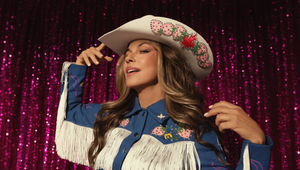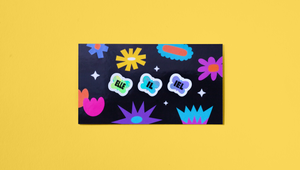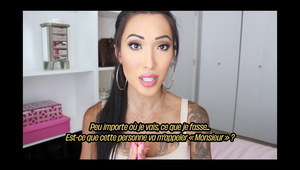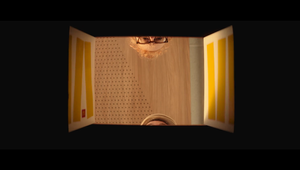
Does Super Bowl Advertising Pay Off?

With Super Bowl Sunday coming up, the ad world is shaking with anticipation as it waits to see which brands make the biggest splash on such a huge occasion. Teasers turn into the real deal, copious sums of invested money get evaluated as worth it - or not - and the viewers eagerly wonder which celebrity cameos are going to crop up.
But, in all of this, with all the dollars flowing between bank accounts, is it actually worth the money? And, more importantly, with the fact that Canadians can’t even watch the American ads due to regional constraints, does big game advertising actually pay off for brands? According to Hugo Fournier, vice president, strategy at Cossette, that all really depends on how you approach it. Factors like winning the fame contest, embracing cultural relevance, and just ensuring the work passes the gut test are all vital… and when not done, can lead to dissatisfying results that don’t measure up to the top brands.
To explore this in depth, and look at just what it takes to create good Super Bowl advertising, both in Canada and out, LBB’s Josh Neufeldt sat down with Hugo for a chat.
LBB> Specifically, the big question you’re always looking at is whether Super Bowl advertising really pays off. So, in your opinion, does it?
Hugo> In an uncertain economic climate, it’s fair to question the effectiveness of a 30-second Super Bowl ad. But I think advertisers look way beyond the 30-second spot when they plan for this. They look at it as an integrated experience that’s designed for the audiences before, during and after the big game.
While this opportunity offers enormous reach - with an audience of approximately 115 million viewers in the United States alone - it’s essential to ensure that every dollar spent translates into a worthwhile investment, and that’s why all exposure outside the actual 30 seconds is important.
So, can it pay off for a brand? Yes. But as a marketer, you need to look at the right effects and measure accordingly. Airtime during the Super Bowl can have a short-term effect on a brand’s sales and revenue, depending on the product or service category. That’s amazing if it does, but it shouldn’t be the main focus. Brand owners will mainly look at engagement levels, positive sentiment, and the fame effect generated by the brand’s presence.
In a nutshell, brands that can win that fame contest are likely to enjoy more return on investment than others.
LBB> Notably, while Canada also dedicates a lot of effort towards prepping for the event, the ads featured here are generally different from those in America. So, does that answer change when looking at the question on a per-country basis?
Hugo> Unless you’re a pro streamer or know how to use a VPN, you’re right, Canadians won’t see most of the highly anticipated American ads during the game. That’s because of regional constraints and broadcast programming rights that are specific to Canada. However, what we can see is American brands with Canadian ambitions that extend their TV buys to the audience here in Canada.
Plus, the marketing hype in Canada is very different. For Canadian brands, the tradition of creating a ‘purpose-built’ 30-second spot that pushes the envelope of creativity and celebrity usage is something we rarely see. However, don’t get me wrong - there’s definitely a huge opportunity for brands in Canada to run an ad or even launch a campaign during the actual game, because the audience numbers remain very attractive.
LBB> With this in mind, what’s your forecast for this year’s game? What can brands realistically expect in terms of ROI, in both North American markets?
Hugo> My assessment of this year’s Super Bowl situation is: spending $7 million for 30 seconds doesn't guarantee all the desired marketing effects.
I’m saying that because the Super Bowl advertising space has become increasingly crowded, much like the Black Friday or Christmas period. The competition for attention includes a large amount of ‘big game’ ad noise (think of Liquid Death, which did something special this year without being an official advertiser), as well as parallel stories like Taylor Swift’s that get a lot of attention. What’s more, official advertiser spots are aired up to 10 days on social media before the game.
For brands and agencies, capturing people’s attention has truly become a chess game. This has to be one of the most challenging creative and strategic missions for agency folks.
LBB> As such, how is this influencing your approach to strategy at Cossette? And how has this evolved for 2024 from prior years, if at all?
Hugo> Everything has changed and nothing has changed.
The difference now is that the creative product extends far beyond a traditional ‘paid media’ piece. The creative possibilities are limitless. And, if we look at brands trying to play with Super Bowl conventions, it’s just as rewarding to watch this from an audience standpoint. The Tubi ‘interruption’ last year, for instance, felt modern and surprising.
Similarly, at Cossette, we encourage our people to think of experiences that make folks feel good about the brand and create the right associations in their minds. It can be through brand communications initiatives, but also through a sampling experience or a weird TikTok idea.
When it comes to strategic approaches, we also try to master the often-overlooked basics - finding a problem to solve, understanding the audience, being a trusted adviser for clients, and identifying the right effects to measure.
LBB> Equally important – as someone who works in Montreal, does the way Super Bowl season gets approached differ from that of other provinces? Or do you believe there’s a relative sameness to Canadian Super Bowl work across the country?
Hugo> In Quebec, we have our own big advertising event during the annual ‘Bye Bye’ TV special that reviews the past year’s most noteworthy events. So, during the Super Bowl, I believe most people here who work in advertising focus on enjoying their watch parties and overanalysing American ads.
LBB> Obviously, it’s a bit late for brands to be working on new campaigns now, but looking ahead to next year, how should they be looking to push creative boundaries beyond the traditional 30-second ad?
Hugo> We talk a lot about media fragmentation in Quebec and Canada. Even though the Super Bowl reaches up to 115 million people in the United States, brands do face this challenge. People watch the game in different ways on different platforms. Advertisers can push their creativity further if they know how their audience watches the game and what content makes them feel something. It goes back to knowing your audience and using cultural references and cues that resonate with them.
LBB> Are there any good examples of this that come to mind? And what do you like about them?
Hugo> One example that comes to mind is the UberEats ad teaser featuring David and Victoria Beckham, letting the fans know that they’ll be in a big sports commercial. The brand recreated the viral ‘Be honest’ meme from the ‘Beckham’ Netflix documentary released last year. The brand won the attention of a lot of people by being one of the first to launch its Super Bowl teaser. It’s culturally relevant and proof that a meme can go a very long way.
LBB> So, if infusing elements of pop culture equates to Super Bowl wins, how can this be done tastefully, without being too on the nose?
Hugo> You’re right - sometimes it feels like brands cram too many cultural ingredients into the dish. I think it’s a question of balance, and again, they should verify if the celebrity, the jokes or the cultural cues pass the test with the target audience. It doesn’t exactly need to be in the form of a formal pre-test, but just a gut check kind of test.
LBB> Finally, ahead of the big game, is there anything you’re particularly excited to see?
Hugo> I forgot everything about the game when I found out I could bet on Taylor Swift outfits!















